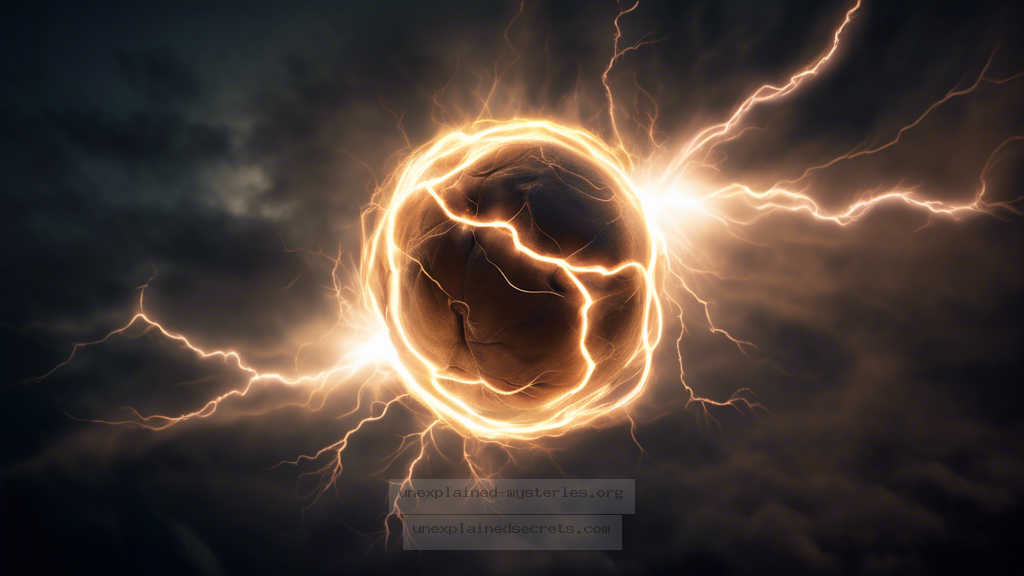What Causes the Mysterious Phenomenon of Ball Lightning?
What Causes the Mysterious Phenomenon of Ball Lightning?
Ball lightning is one of the most enigmatic and captivating phenomena in the realm of atmospheric science. Considered a scientific anomaly, this rare and unpredictable event has perplexed researchers for centuries. The phenomenon appears as glowing, spherical objects that can drift through the air, potentially causing destruction or even death. Understanding ball lightning is not just an academic curiosity—it has implications for safety, energy research, and our grasp of electrical phenomena. This article delves into the mystery of ball lightning, exploring its historical context, scientific theories, and future research directions.
Historical Context of Ball Lightning
Ball lightning has been documented throughout history, with references found in texts as far back as the 16th century. Notable accounts include reports from victims of lightning strikes who described witnessing glowing orbs during thunderstorms. For instance, in 1638, a manuscript by the English philosopher Thomas Browne detailed a man observing a ball of light during a storm. Such historical accounts highlight the long-standing intrigue surrounding this phenomenon.
One of the most famous documented cases occurred in 1900, when a group of scientists observed a ball lightning event during a thunderstorm in St. Petersburg, Russia. Witnesses described a glowing sphere that floated through the air, illuminating the surrounding area. Despite the growing number of accounts, scientific understanding of ball lightning has remained elusive.
Core Concepts and Theories Behind Ball Lightning
Researchers have proposed various theories to explain the formation and behavior of ball lightning. The primary hypotheses include:
- Plasma Theory: One leading explanation suggests that ball lightning consists of plasma, a state of matter formed when gas is energized to the point that electrons are stripped from atoms. This theory posits that the glow and movement of ball lightning are due to electromagnetic forces.
- Chemical Reactions: Some scientists theorize that ball lightning is created through chemical reactions involving silicon and other elements in the atmosphere during thunderstorms. This theory has gained traction due to laboratory experiments that simulate similar conditions.
- Quantum Effects: A more speculative approach involves quantum mechanics, suggesting that ball lightning may be a result of quantum tunneling or other non-classical phenomena.
Practical Implications of Understanding Ball Lightning
Understanding ball lightning is vital for several reasons. First and foremost, it has significant implications for public safety. As ball lightning can appear unexpectedly and exhibit destructive behavior, improving our understanding could lead to better safety protocols during thunderstorms. For example, improved forecasting of electrical storms could help mitigate risk for those in high-risk areas.
Additionally, insights gained from studying ball lightning may have broader applications in energy research. The potential for harnessing plasma and other electrical phenomena could lead to advancements in energy storage and transmission, which are critical for sustainable energy solutions.
Documented Cases of Ball Lightning
Several documented cases of ball lightning provide insight into its unpredictable nature:
- The 1838 Event in France: A group of soldiers reported observing a ball of light that floated through the air and exploded, causing damage to nearby trees.
- The 1970s Incident in the USA: A family reported a glowing orb entering their home during a storm, bouncing around and disappearing without causing any damage.
- The 2007 Chinese Report: After a severe thunderstorm, villagers described seeing glowing orbs drifting through the fields, leading many to speculate about their origin.
Alternative Perspectives on Ball Lightning
While many scientists are dedicated to uncovering the secrets of ball lightning, alternative perspectives exist. Some skeptics argue that many reported cases could be attributed to misidentifications of other phenomena, such as electrical discharges or natural gas ignitions. These skeptics emphasize the need for rigorous scientific validation before accepting ball lightning as a legitimate phenomenon.
Others propose that ball lightning may be a manifestation of psychological phenomena, such as pareidolia, where people perceive patterns or shapes in random stimuli. This perspective highlights the importance of distinguishing between subjective experiences and objective reality in scientific inquiry.
Common Misconceptions and Clarifications
Several misconceptions about ball lightning persist, often stemming from sensationalized accounts or misunderstandings of the phenomenon:
- Myth: Ball lightning is merely a myth. Despite its elusive nature, numerous documented cases substantiate its existence.
- Myth: All glowing orbs during storms are ball lightning. Many phenomena, such as St. Elmo’s fire or sprites, can be misidentified as ball lightning.
- Myth: Ball lightning is harmless. While some reports indicate that ball lightning can cause no harm, others detail incidents where it caused injury or damage.
Best Practices for Investigation and Study
For researchers interested in studying ball lightning, several best practices can enhance the investigation:
- Field Observations: Conducting on-site observations during thunderstorms can provide firsthand data. Utilizing high-speed cameras can capture events as they unfold.
- Collaboration with Meteorologists: Partnering with meteorological experts can improve understanding of storm conditions that might lead to ball lightning.
- Laboratory Simulations: Recreating thunderstorm conditions in controlled environments can help scientists test various theories about ball lightning creation.
Future Developments and Ongoing Research
Research on ball lightning is ongoing, with several directions showing promise. For instance, advancements in plasma physics and materials science may provide new insights into the conditions necessary for ball lightning to form. Additionally, the use of artificial intelligence and machine learning could assist in analyzing vast amounts of observational data, enhancing our understanding of this mysterious phenomenon.
International collaborations among atmospheric scientists, physicists, and engineers are likely to foster innovative approaches to studying ball lightning. Upcoming conferences and research initiatives aim to unify efforts and promote interdisciplinary dialogue, enriching our comprehension of this captivating mystery.
Conclusion: The Enigma of Ball Lightning Remains
Ball lightning stands as one of nature’s most intriguing mysteries, embodying the intersection of science and the unknown. With historical accounts confirming its existence and ongoing research striving to unlock its secrets, this phenomenon continues to captivate the scientific community and the public alike. Understanding ball lightning not only holds potential for enhancing safety during electrical storms but may also pave the way for breakthroughs in energy research and atmospheric science.
As investigations continue and new technologies emerge, we may be closer than ever to unraveling the enigma of ball lightning and bringing this scientific anomaly out of the shadows and into the light.
Other Articles
Recent Posts
- What Happened to Flight MH370? The Conspiracy Theories That Still Haunt Us
- What Secrets Lurk Within the Walls of the Infamous Trans-Allegheny Lunatic Asylum?
- What Evidence Supports the Existence of Bigfoot in the Pacific Northwest?
- What Happened to the Indus Valley Civilization? Unraveling the Mysteries of Ancient Urban Life
- Can Telepathy Be Scientifically Proven Through Laboratory Evidence?







